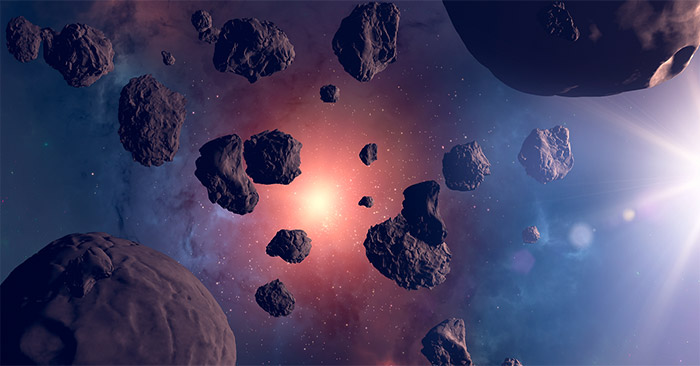Uranus's 4 icy moons can exist liquid water oceans
When it comes to exploring the planets in our solar system, most attention is focused on those closest to Earth, where human spacecraft can easily visit or track. than. With today's powerful telescope systems, scientists regularly observe gas giants such as Jupiter, Saturn, and constantly find new things.
However, more distant planets such as Uranus and Neptune often receive little attention due to technical limitations. As technology gradually became more advanced, and more and more scientists advocated a mission to visit this planet. That determination was further strengthened when a recent study found that four of the planet's moons may contain liquid water.
Accordingly, researchers from NASA's Jet Propulsion Laboratory re-analyzed data collected from the Voyager 2 mission that passed by Uranus in the 1980s to look at the five largest of the moons. 27 moons of this planet: Ariel, Umbriel, Titania, Oberon and Miranda. Using computer modeling of the porosity of the surfaces, the team found that four of these moons may contain oceans of liquid water beneath the icy crust.
The chart below shows the arrays of the interior of Uranus' five largest moons, which are thought to be composed of layers of ice, rock, and water. Although Uranus and its moons are very far from the sun and therefore have very cold surface temperatures, the existence of salty oceans is possible because they are insulated by a layer of ice. thick, and seems to have ammonia in it that acts like a natural antifreeze. In some cases, moons can warm themselves by internal heat from their rocky mantle.

This insulating effect is similar to that seen in the icy moons around Jupiter and Saturn, which are also thought to contain oceans and are a target for research on the possibility of life. There seem to be plenty of places in the solar system that could contain oceans of water, even if they are outside the habitable zone.
You should read it
- The unexpected truth about Uranus - the king of the sky
- Explore the moon and extremely detailed planets with new features on Google Maps
- Is solar water heater heating water good?
- Giant water columns discovered on Saturn's moon Enceladus
- If 'stray' to any planet in the solar system, what is your chance of survival?
- The moon has a life expectancy of about 4.51 billion years - bigger than we think and so does life
- How is solar water heater structured, working?
- How big is the solar system?
- Stunning photos of the largest moon in the Solar System
- New technology helps NASA find water, self-sufficient food on the moon
- Announced the first comprehensive geological map of the Moon
- NASA announces a place that can survive life right in our solar system
May be interested

Why does a 5-pointed star twinkle in the sky?

Detecting an asteroid the size of an olympic swimming pool, topping the list of Earth collision risk

Astronomers create the most accurate map of all matter in the universe

10 brightest stars in the sky

NASA has just discovered an asteroid with an extremely 'weird' shape

Admire the majestic spectacle of swirls of dust and gas in nearby galaxies






 What is magnetic water? The 1-0-2 properties of water from
What is magnetic water? The 1-0-2 properties of water from New research shows the motion of water molecules
New research shows the motion of water molecules Terrified, watching the gruesome black liquid 'creep' into its skull
Terrified, watching the gruesome black liquid 'creep' into its skull Should GPUs be liquid-cooled for better performance?
Should GPUs be liquid-cooled for better performance? LEGO pieces can last up to 1,300 years in the ocean
LEGO pieces can last up to 1,300 years in the ocean The interesting scientific knowledge that we missed while at school
The interesting scientific knowledge that we missed while at school